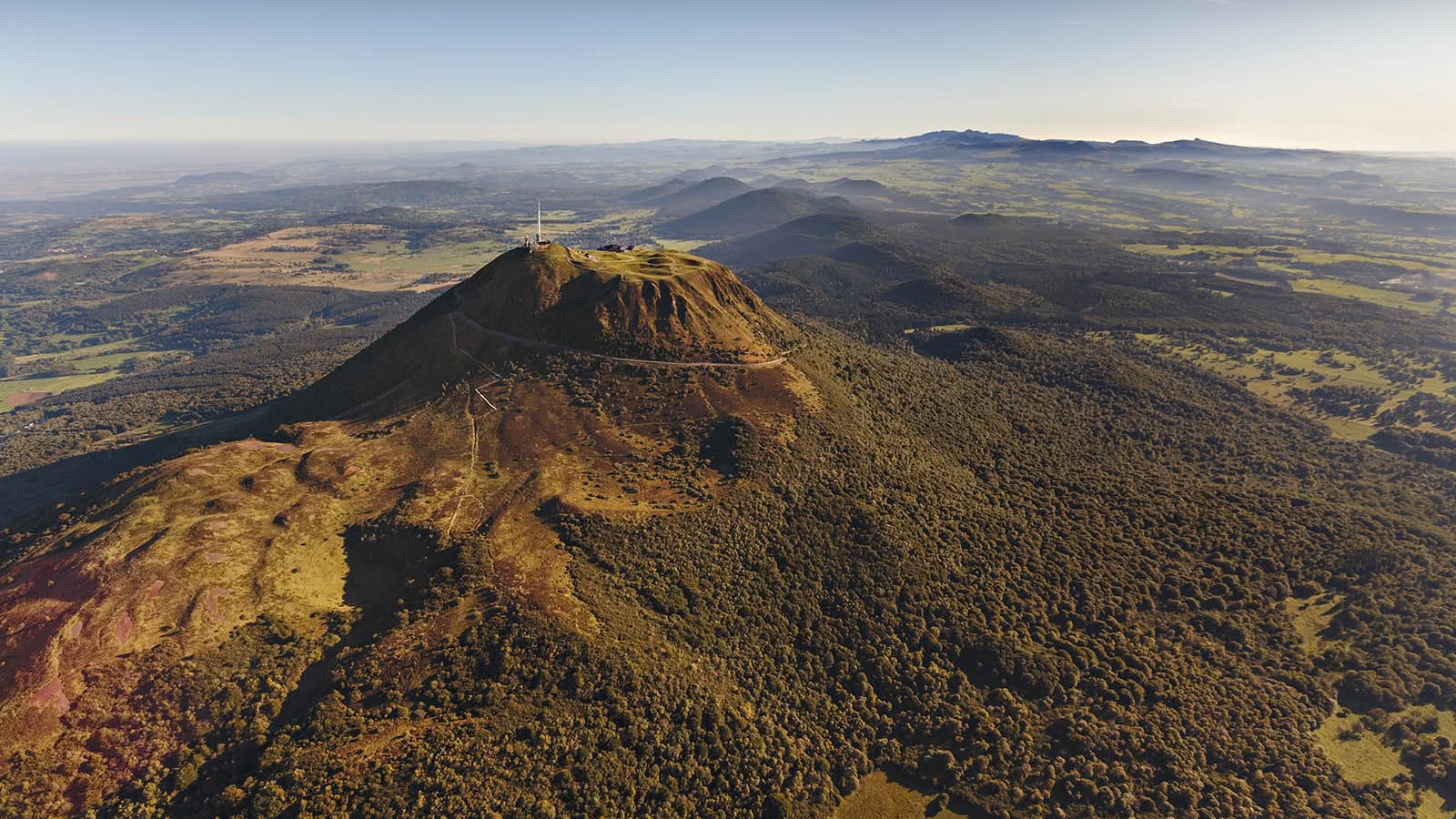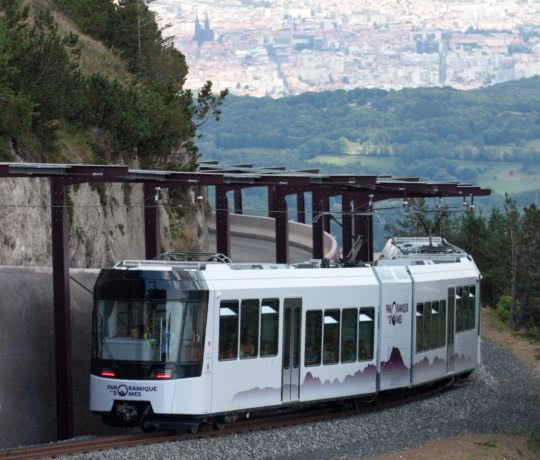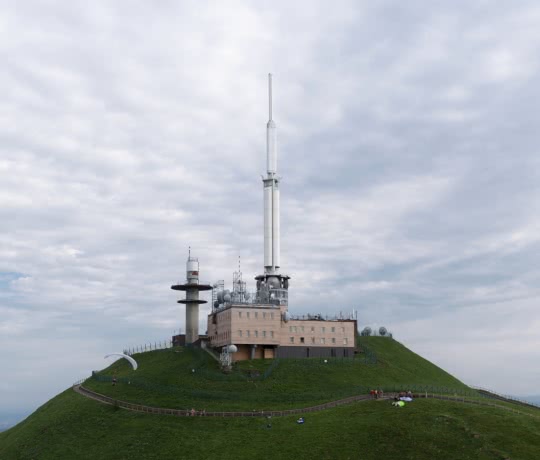Discover the Puy de Dôme

Peaking at 1465 m, the Puy de Dome is the jewel of the Chaîne des Puys and a member of the Grand Site de France network.
Climb to the top either on foot or aboard the panoramic train. At the summit, discover the Temple of Mercury, the Clermont Observatory of Terrestrial Physics and a wide choice of activities.

Panoramic Domes – The cog railway
Sit back, relax, and make your way to the summit of the Puy de Dôme while enjoying breathtaking landscapes. Let the panoramic railway guide you to the top, as a family or with friends.
To the summit
Hiking to the summit
Two paths lead to the summit of the Puy de Dôme, starting from the car park of the Panoramique des Dômes: the Chemin Chèvres (4.9 km, 3 hr) and the Chemin de Muletiers (3.9 km, 2 hr). The first takes hikers to the top along the north face, with stunning views of the Puy Pariou, the Puy des Goules and the Puy de Côme. The Chemin de Muletiers runs up the south face of the mountain. The path is well-travelled and steep (2.3 km of hiking for an elevation gain of 350 m).
Once at the summit of the Puy de Dôme, you have two options: stroll around the paths or continue to explore. There are three walking paths at the top: Curious, Conquerors and Little Explorers.
Breathe
Temple of Mercury
Discover the Temple of Mercury museum. In the same building as the weather observatory, both young and old will enjoy this interactive discovery of the ancient sanctuary of Mercury.
Visit!
Looking for thrills?
Take to the skies for the best views of the Chaîne des Puys. Fly over the volcanoes in a plane or a hot-air balloon. Launch from the summit of the Puy de Dôme in a paraglider. Auvergne is the perfect playground for aerial sport enthusiasts and professionals.
Take flight
Weather Observatory
At the summit of the Puy de Dôme, discover the Clermont Observatory of Terrestrial Physics, one of thirty stations of reference around the world for observing the evolution of our climate. Open on request for school groups and workshops for "budding scientists".


